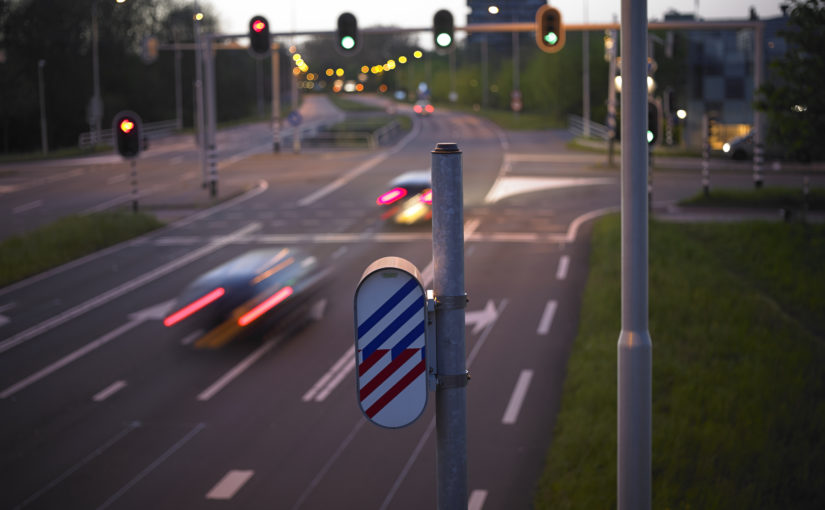The Automated Enforcement Chain
The Automated Traffic Enforcement Chain
Automated Traffic Enforcement works best when the driving public is given the perception that they can be checked for traffic violations anytime, anywhere. Moreover, the violator should be promptly notified of a violation. The punishment, which mostly includes the payment of a fine, needs to be paid quickly and is perceived as high enough to act as a strong deterrent. Administratively fine collection can be a difficult and laborious process if the violator is not willing to pay. Therefore, it has to be absolutely clear to the violator that 1) the authorities have solid and accurate evidence that the violation took place, 2) there is no escape from the issued fine, and 3) that the penalty will continue to increase with payment delays. Moreover, it has to be obvious that eventually, any non-paying violator will be ordered to appear before a judge in court. The likelihood of successful court challenges to traffic fines needs to be very low to discourage future challenges. It also has to be clear that the fines can also be collected from the violator involuntary, by whatever legal means possible.
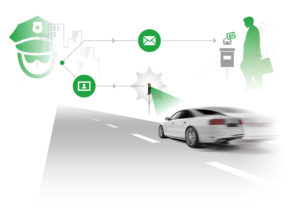
News of an ineffective automated traffic enforcement chain travels fast. If violators can afford to avoid payment, the number of violations will increase rapidly, enforcement loses its effect and road safety suffers.
For this purpose it is good to view the entire automated traffic enforcement process as a chain with various separate and interdependent links. The chain starts with the initial detection of a violation and ends with fine payment or in court. Apart from the above issues, ineffectiveness and inefficiencies can appear in several links of the automated traffic enforcement, often with negative effects on road safety. If one link is weak this could impact the entire enforcement chain and it is therefore important to analyse each link for potential problems.
The automated traffic enforcement chain consists of the following links, which will be dealt with in the paragraphs below:
| 1. Detect |
| 2. Measure |
| 3. Decide on violation |
| 4. Register |
| 5. Transfer |
| 6. Store evidence |
| 7. Process evidence, issue and send ticket |
| 8. Receipt of ticket |
| 9. Provide evidence upon violator’s request |
| 10. Collect fine |
| 11. Remind violating party |
| 12. Court |
1. Detect
Equipment with a high detection rate is a key item at the start of the automated traffic enforcement chain. Identifying all passing vehicles is important since only then all potentially violating vehicles can be caught. If low percentage of vehicles and thus violators are detected, some violators will escape punishment for their road unsafe behaviour. Feelings of injustice may arise (why am I caught, and not the other speeding vehicle). This will affect the public support for automated traffic enforcement. Hardware with high detection rates is therefore required.
Detection methods have their advantages and disadvantages. Consistently high detection rates are possible with reliable and durable detection methods such as inductive loops or modern tracking radars. If installed properly (loops) or mounted sufficiently high (tracking radar), the overall disadvantages of these detection methods are quite limited. Although accurate, other methods such as video, piezo, laser and low mounted radar all suffer from some disadvantages due to one or more of the following issues: sensitivity, lighting conditions, weather (fog, snow, rain, etc.), occlusion (blockage of a violating vehicle by another vehicle), soiling by precipitation and dirt from passing vehicles, wear and tear, high maintenance intensity and sensitivity to vandalism and damage. These issues may increase operational costs and/or reduce detection rates and thus the reliability and legal equality of the enforcement operation.
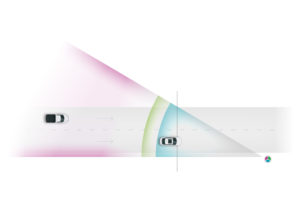
2. Measure
After detection of a vehicle its speed needs to be measured. Obviously, this needs to be done correctly with a legally pre-defined accuracy. It should be noted that the increasingly popular average speed enforcement systems (section control) calculate speed based on accurate time measurement over a predefined distance and not by measuring spot speeds.
Measurement is not relevant for red light enforcement. Detection of a vehicle during a red light phase crossing a legally defined line is crucial here. This can be observed visually since both the position of the vehicle and the red status of the traffic light can be seen in either two images or a combination of an image and a video.
3. Decide on violation
If a vehicle is measured exceeding a legally set speed limit, this should result in a violation. Deciding on a violation is based on the comparison of two speed values by the enforcement camera i.e. the local speed limit and the registered speed. Also here all violating vehicles should be treated in the same way. In case of a false negative, when automated traffic enforcement equipment misses or fails to decide on speeding vehicles this will result in legal inequality. On the other hand, the same applies to false positives, when vehicles were registered as speeding, but were not. Implementing proper government authorised and impartial homologation (type approval), verification and calibration procedures will prevent these issues.
Concurrent violations, can also be handled with the latest tracking radar technology and the higher data processing capacity of the most recent enforcement cameras. Such violations refer to e.g. three vehicles speeding or going through a red light at the same point at the same time. In older simpler systems the one vehicle would be detected, the others would go free due to processing time required for the first vehicle. In other instances the measurement and thus evidence could only be made for one vehicle, not for multiple vehicles at virtually the same time.
4. Register
After a positive decision on a violation, the image/video and data for that violation need to be registered immediately in a correct, secure and unchangeable way. When properly registering evidence data the use of cryptography is vital. Cryptography includes encryption, authentication and integrity. This allows for respectively 1) multiple reads only by authorised personnel (encryption), 2) data originating from the right source (authentication) and 3) no tampering with data by anyone (integrity). Records of non-violating vehicles need to be discarded, but depending on the country may also be kept longer e.g. for security or criminal investigations. Here a related issue comes up. How long can data of non-violating vehicles be kept by the violation camera? In light of privacy and security, which are often conflicting in terms of storage rights, such issues need to be legally and procedurally defined by the government.
Often the license plate data from the registered image file are already processed and read in the enforcement camera by ANPR software and are digitally integrated in the evidence file. The ANPR data from an image include a value indicating the confidence level which specifies the certainty of a correct reading of a license plate. Confidence levels below a predetermined threshold will need additional processing, and may require a manual check which is costly and reduces operational efficiency. In France and the Netherlands, with fully automated processing from the initial violation registration to the issuance of a mailed violation notice, a high ‘autoratio’ requirement is crucial. An autoratio of e.g. 90%, means that more than 90% of the licence plates need to be read and processed automatically. Within this 90% less than one licence plate of 10,000 vehicles may be read erroneously. Such strict requirements put high demands on the readability of license plates, image quality of the enforcement camera and the ANPR software and processing. Assuming the most authorities are aiming for high processing efficiency, equipment standards with high detection and read ratios and low error ratios should be required in procurement documentation.
In owner liability countries license plate quality and readability affect the efficiency of automated violation processing. The clarity, uniformity and readability of a license plate affects the quality of the registered evidence. For instance large black letters on clean reflective solid white or yellow plates with a predictable uniform syntax and font (without stickers or mounting bolts) get the highest ANPR rates. This will cut processing costs in owner liability countries significantly. Some countries (e.g. South-Korea and the Netherlands) have changed the license plate format, material, font and/or syntax to accommodate for better licence plate readability. The AAMVA (Association of American Motor Vehicle Administrators) issued a report with detailed recommendations on various aspects of license plate design. For the governments good licence plate readability will improve enforcement efficacy, but could also enhance security e.g. when tracing suspect or stolen vehicles by means of CCTV or enforcement cameras.
5. Transfer
After registration the evidence data need to be transferred from the enforcement camera to a central server which, depending on the organisation, can be located with the police, municipality, central or regional government organisation or, depending on the contract, with a private entity. Ideally, transfer of these data files should be subject to the above mentioned cryptography conditions. Such data can be transferred by means of a fixed data line, WiFi or 3G or 4G mobile broadband connection. Depending on the authorised procedures, some countries still opt for a traditional method of physically exchanging data storage devices (e.g. hard disks, memory cards or USB sticks) similar to exchanging wet film cartridges with analogue enforcement cameras. This obviously also adds to processing and other enforcement related costs. Moreover, such loose storage devices may get damaged or lost. Properly secured mobile or fixed network data transfer is preferred for authorities when setting communication protocol standards.
6. Storage
Violation evidence data are transferred to a secure data storage location to issue citations from the back office, but also for longer term storage (also ref. 3.4.) and future reference e.g. by the violator, police, public prosecutor or judge. Such legal evidence data need to be properly backed up and mirrored in reliable data centres at other locations to be secure in case of calamities, based on the relevant government criteria.
7. Process evidence, issue and send ticket
The evidence, which consists of one or two images (and increasingly also video) and violation data, requires further processing in the back office to prepare notices to be issued and sent to the owner of violating vehicle. There are considerable variations in the operations and functionalities of back offices depending on the legal framework and process architecture. License plates in violation images may need to be read and ANPR processed if they have not been processed already in the violation camera. Depending on the process, license plate data may need to be keyed in manually, or after ANPR reading confirmed visually by a police officer or other authorised employee. Ironically, the error rate of a manual procedure is considerably higher than that of automated ANPR processing.
Most driver liability countries need to identify the driver in the image and have to process all evidence manually. Lighting conditions of the license plates and drivers faces are quite different and need to be adjusted to produce credible evidence. As mentioned, the prosecutabilty rates of driver liability countries are considerably lower than of owner liability countries. The opposite applies to processing costs per ticket, which are much higher. However, in the future new technology may allow for more automated processing of front photography images in driver liability jurisdictions.
Matching license plates with the owner’s addresses by accessing the vehicle registration database and matching the violation with a fine or other penalties are key processes taking place in the back office. Several countries struggle to build and maintain an accessible, correct and up to date vehicle registration database. If a vehicle is sold and gets a new owner at say 12:49 on a given day, it needs to be registered as such. Inaccuracies in this database will result in fines for the wrong owner or driver. This adds to the back office workload and will obviously affect public support for enforcement. When the owner’s address is found and the violation data matched with the legally set fine for the violation in question the citation can be issued and sent.
Some countries which lack reliable delivery or accuracy in postal addresses may opt for violation notification by SMS text messages sent to mobile phones. In all countries there are more mobile phones than cars. In most countries you own a mobile phone before you own a car. Legal notifications with references to rights and conditions can be sent in a follow-up SMS. This obviously needs legal and procedural clearance and phone numbers need to be added to the vehicle registration database.
As mentioned above a combination of owner liability, administrative law, clear license plates, high quality enforcement cameras and effective ANPR software allow countries like France and the Netherlands to annually process millions of violations from automated enforcement systems with limited or no human intervention from one national citation processing and fine collection centre.
France has managed this process very well from its CNT (National Processing Centre) in Rennes. In 2015 13,3 million violation notices were issued. However, a huge volume of evidence files from enforcement cameras can also create major operational bottlenecks. If not properly scaled and implemented, such volumes could also affect or even shut down enforcement programmes and may thus hamper road safety. Various media in Belgium reported recently that their new average speed control system had to be turned off at certain times since more violations were registered than could be handled operationally. This resulted in a backlog of roughly 23,000 unprocessed violations. Backlogs which continue to grow tend to run the risk of being dismissed, which sets a serious precedent, creates expectations among drivers for more future dismissals and again affects the credibility of road safety enforcement.
8. Receipt of ticket
After sending out a citation by means of a letter it needs to be received by the owner of the violating vehicle. This sounds quite logical but governments need to arrange that ‘not receiving’ such notice or letter will not be an acceptable reason for ignoring the violation notice and thus for damaging this link of the enforcement chain. Depending on the quality of the postal delivery, registered mail may be considered, but in most countries regular mail is used. However, this means a legal and procedural arrangement needs to be made which implies that sending a violation notice implies receipt of the same, e.g. refusing acceptance of registered mail cannot be a legal escape from a traffic fine.
Research has shown that the earlier the driver is confronted with a violation and a penalty the better the effect of enforcement is for correcting driving behaviour. This means that governments needs to define procedures for efficient back office processing. In owner liability countries technology allows for a very quick violation notice e.g. the next day by means of an e-mail or SMS text message. Authorities that want to use this option should start to include e-mail addresses and mobile phone numbers in the vehicle registration database and arrange for updates and changes to such data to be the liability of the vehicle owner.
9. Provide evidence upon violator’s request
Many vehicle owners who receive a violation notification may want to obtain more information, i.e. see the evidence photo or video with the violation data such as speed, location, time, etc. Such information can be sent by mail or offered by means of internet access. It should be noted that in countries with front photography (e.g. driver liability jurisdictions), the passenger side should be blocked out for privacy reasons.
When providing violation evidence over the internet, other relevant information which further backs this evidence can also be shown to the violator. This may include data on the type approval, verification and calibration of the relevant enforcement equipment and anonymous credentials and training data of the relevant officer in question. After reviewing the evidence over the internet the violator is often given the option to select a fine payment or objection window. Presenting overwhelming evidence and relevant documentation should encourage quick payment and reduce legal escalation cases.
A key aspect which should be presented to a violator is targeted publicity on why enforcement takes place, and more specifically, why on the specific location of the registered violation. For example: “The E23 road stretch where speeding with your vehicle was registered is speed enforced since 4 casualties, 5 injuries and 8 crashes occurred here in the past 5 years”. Such specific publicity promotes support and also contributes to automated traffic enforcement being seen as a road safety measure and not as a revenue generator for the government.
10. Automated Traffic Enforcement
Similar to sending the citation, fine collection should be effectuated as early as possible to maximise the effect of enforcement as a road safety instrument. To encourage timely payment the citation should clearly specify the fine escalation scheme and collection process should the violator not settle the fine within the due date. As mentioned some countries (e.g. Germany) work with an initial warning or a transaction proposal with a relatively low fine for a minor violation which has to be paid quickly. Late payment initiates a higher fee and a more formal legal process. Road safety benefits are also expected from a progressive fine system whereby the first traffic fine issued in a given period is a standard fine and an increasing fine multiplier is used for subsequent violations.
Of the roughly 8.5 million fines issued in 2015 the Dutch Central Fine Collection Agency (CJIB) collected 92% of the fines within one year. In France the Centre National de Traitement (CNT), a similar centre in Rennes, issued 13,3 million fine notifications in 2015 of which 2.3 million were sent to foreign vehicles. Fine payment rate for French vehicle owners within 45 days is higher than 80%. Most of the violators in France settle their fines through the internet.
11. Remind violating party
As part of an efficient fine collection process and to maintain the efficacy of the automated traffic enforcement chain, payment reminders need to be sent to overdue violators, preferably in an automated procedure. In the Netherlands the traffic fine is increased by 50% with a first payment reminder if the initial due date of eight weeks is missed. A second reminder doubles the initial fine plus the 50% increase if the first reminder did not result in payment. If a second reminder is not effective coercion methods will be implemented. This out of court coercion process should be well-defined legally and procedurally. Coercion methods in EU countries include: using a bailiff, withdrawing fines directly from bank accounts or from the salary via the employer (i.e. through an Attachment of Earnings Order), seizing of tax credits, impounding vehicles, invalidating driving licenses, etc. In several countries vehicles owned by drivers with overdue fines can only pass their periodic motor vehicle inspection or get a driving license renewal if all traffic fines are paid. Forced fine payment can also occur at police road blocks or during border and airport identification checks when going or returning from a trip abroad. Police cars may have ANPR scanning devices which, while on patrol, will automatically check for various violations. These could include overdue violations, expired car insurance, stolen vehicles, vehicle inspection compliance, etc.
12. Court
To conclude the automated traffic enforcement chain as the final link, and if all the above fails, the violator should know that a judge will ultimately cast a final verdict at the end of the chain. The public prosecutor and judge need to be supported in their judgement by type approval, verification and calibration certificates for the enforcement equipment in question, as referred to above.
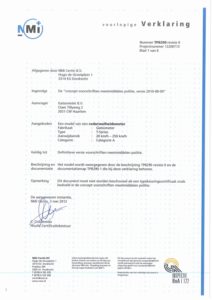
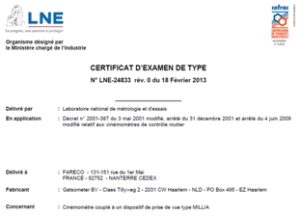
In order to prevent backlogs and subsequent acquittals due to court overload, the preceding links of the automated traffic enforcement chain should be organised and managed in such a way that the number of violation cases ending up in court should be kept to an absolute minimum. Criminal cases should not be held up for traffic related procedures, that is why many countries have traffic courts which also deal with escalated unpaid traffic violations.
Successfully implementing automated traffic enforcement needs efficiency and efficacy of the entire enforcement chain and the existence of all legal, administrative and operational preconditions. However, enforcement can never be effective as a separate activity. Only in concert with continuous communication, education, publicity, advocacy to promote public understanding and to maintain public and political support, can automated traffic enforcement realise to its ultimate purpose: improving road safety.
